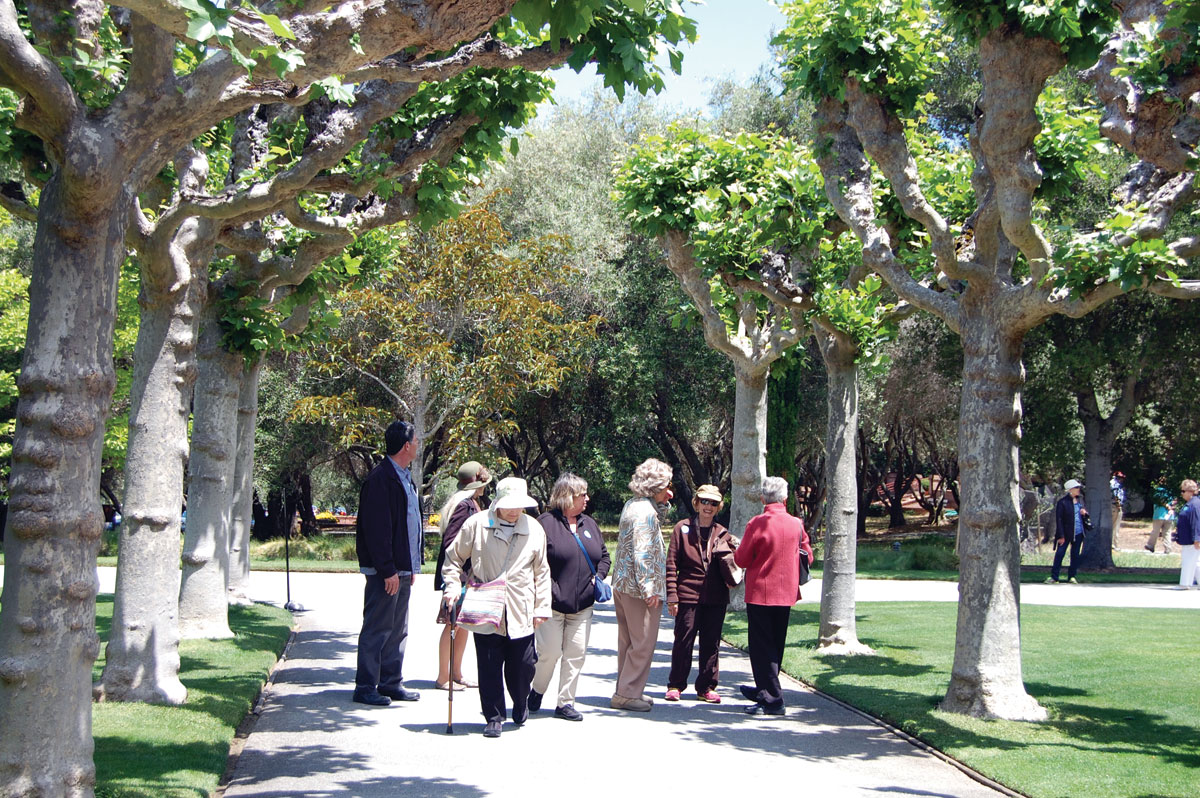Filoli Gardens: A Dream Fulfilled
A group of strollers on a woodland path at Filoli Gardens. (Al Auger)
“You have to dream before your dreams come true”
– Sigmund Freud
William Bowers Bourn II, is one of the least known millionaire in the gold rush history of San Francisco. He was the owner of one of California’s richest gold mines and owned Spring Valley Water Company and Crystal Springs Reservoirs, supplying San Francisco’s water. William Bourn also had a dream, writes our travel editor Al Auger. – @Siliconeer #Siliconeer #Travel #Woodside #California #FiloliMansion #FiloliGarden #FiloliCafé #SanFranciscoBayArea #SanFrancisco #Leisure #SFBayAreaDayTrips
In 1910, William Bourn, and his wife, Agnes Moody Bourn, bought the elaborate Muckross estate in fabled County Kerry, Ireland. According to Wikipedia, the couple, while enjoying their Irish estate, dreamed of an estate like Muckross closer to their San Francisco base. Bourn hired famed designer Willis Polk, who had designed Bourn’s homes in Grass Valley and on San Francisco’s Webster Street.
Built between 1915 and 1917, the lovely Georgian-style mansion was depicted on TV as the Carrington Mansion on the prime-time soap “Dynasty” and as backdrop for outdoor scenes in Warren Beatty’s film “Heaven Can Wait.” The Bourns resided in the Filoli Mansion from 1917 to 1936 when both William and Agnes died. The mansion today it is a U.S. National Register of Historic Places.
The estate was purchased in 1937 by Mr. William P. Roth and Mrs. Lurline Matson Roth, heiress to the Matson Navigation Company. The Roths added to the luxurious Filoli Gardens with dramatic collections of camellias, rhododendrons and azaleas.
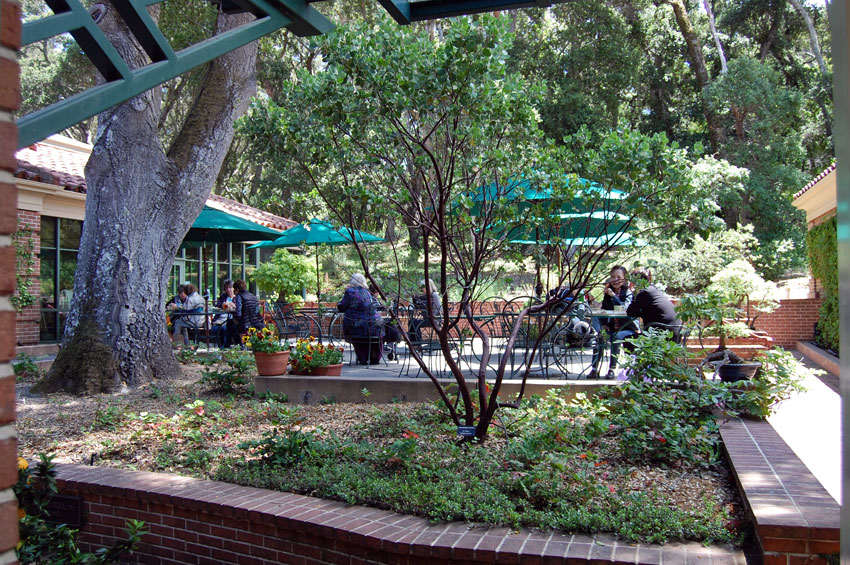
The name Filoli was created by Bourn as an acronym for “FIght for a just cause; LOve your fellow man; LIve a good life.” As lovely and ornate as the mansion is, the true seduction of this hidden is the creation of a garden fit for a lord of the manor. This bold and loving treasure is located in the sleepy burg of Woodside a few miles south of San Francisco.
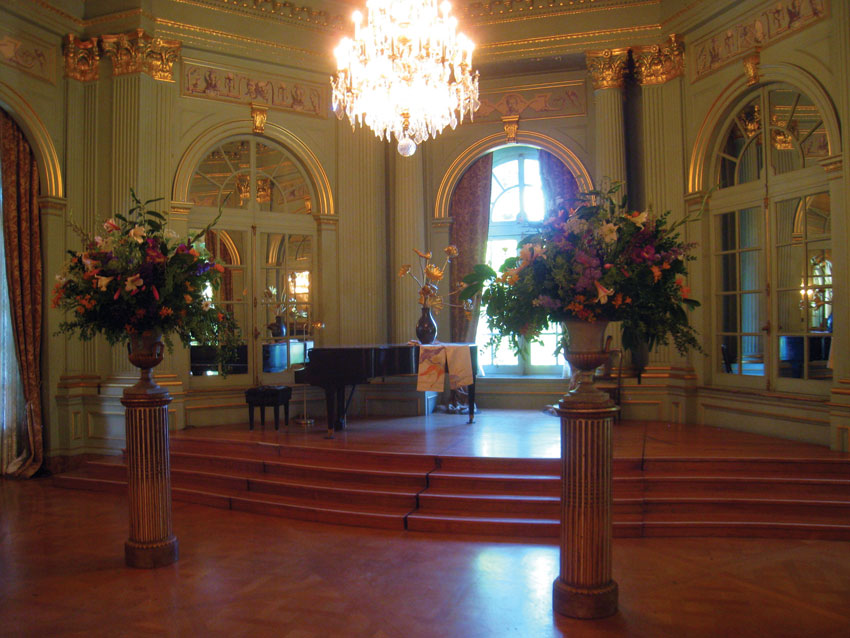
Between 1917 and 1922, Polk’s friend Bruce Porter collaborated with the Bourns in planning the expansive and expressive garden. Horticulturist Isabella Worn was the dedicated artist who created this work of art with plantings and color schemes. She supervised the maintenance of the 16-acre garden for the next 35 years. In 1975 Mrs. Roth donated the entire estate to the National Trust for Historic Preservation along with a generous endowment that helps support and maintain of the estate. As a private, non-profit presided by its own Board of Governors, staff and volunteers.
Because of the sheer beauty and eloquence of the gardens, I’m going suggest a rather different approach to experiencing this marvelous attraction. Ignore the bus tours that clog the parking area. The army of highly knowledgeable docents are always at your beckon and call. But, let’s do the stroll; Gather your friends and one of the well-stated self-guided tour book and saunter through the symmetry of the vivid, eye-splashing color, the warmth of walls of brick with cascading vines and imaginative gates, big and small, best described by the Latin “phantasia.” Stop for a quiet and reflective moment at one of the tranquil pools.

After you have ambled through the gardens, stop at the café for a refreshing beverage or tea on the patio. Sit back and relax watching the beautiful resident peacock coveting his domain. If you’re a home gardener, you have also watched the big band of volunteer gardeners at work. It’s an enriching graduate course in horticulture that will enhance your own imagination and knowledge. These deeply involved volunteers take pleasure in getting dirty. This expanse of growing beauty is most amazing when you consider there are just fifteen full-time gardeners supported by this army of dedicated plant masters.

Then on to the waiting mansion. While basically Georgian in style, the are many other architectural modes arrayed throughout the 36,000 square feet of the two-storied country house. The façade of the courtyard and portico suggests what awaits inside. The massive front door of paneled oak is braced by marble fonts from the Bourns’ San Francisco house and are copies of ones excavated from Pompeii.
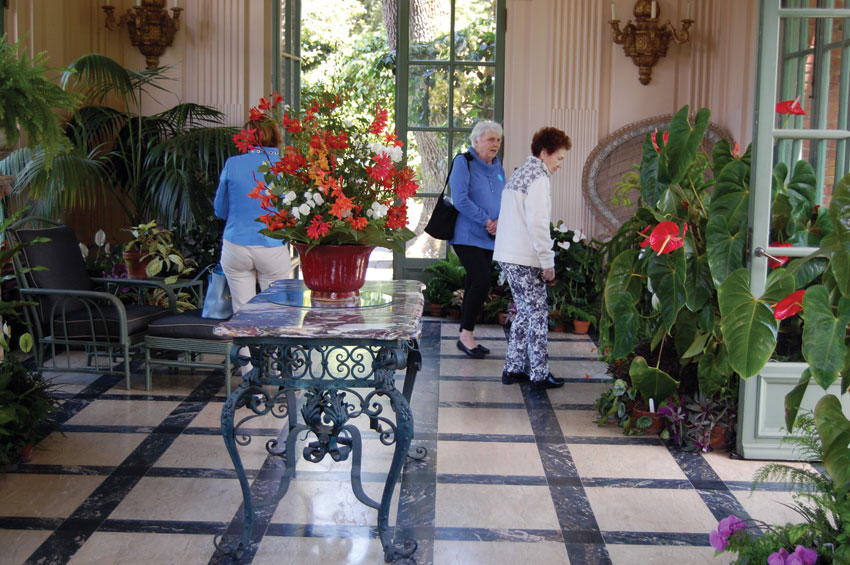
The most beautiful room, by far, is the lovingly appointed ballroom with its step-up atrium highlighted by floor-to-ceiling windows and grand piano. According to the guide book the ballroom chandeliers were custom ordered by daughter Maud Bourn and are fashioned after Louis XVI and the ones hanging in the Hall of Mirrors at Versailles. The overwhelming fireplace is made of Machiavelli marble and decorated with ormolu depictions of Hercules and the Nemean Lions. The mantle again takes its style from Versailles, this time the Hercules Salon.
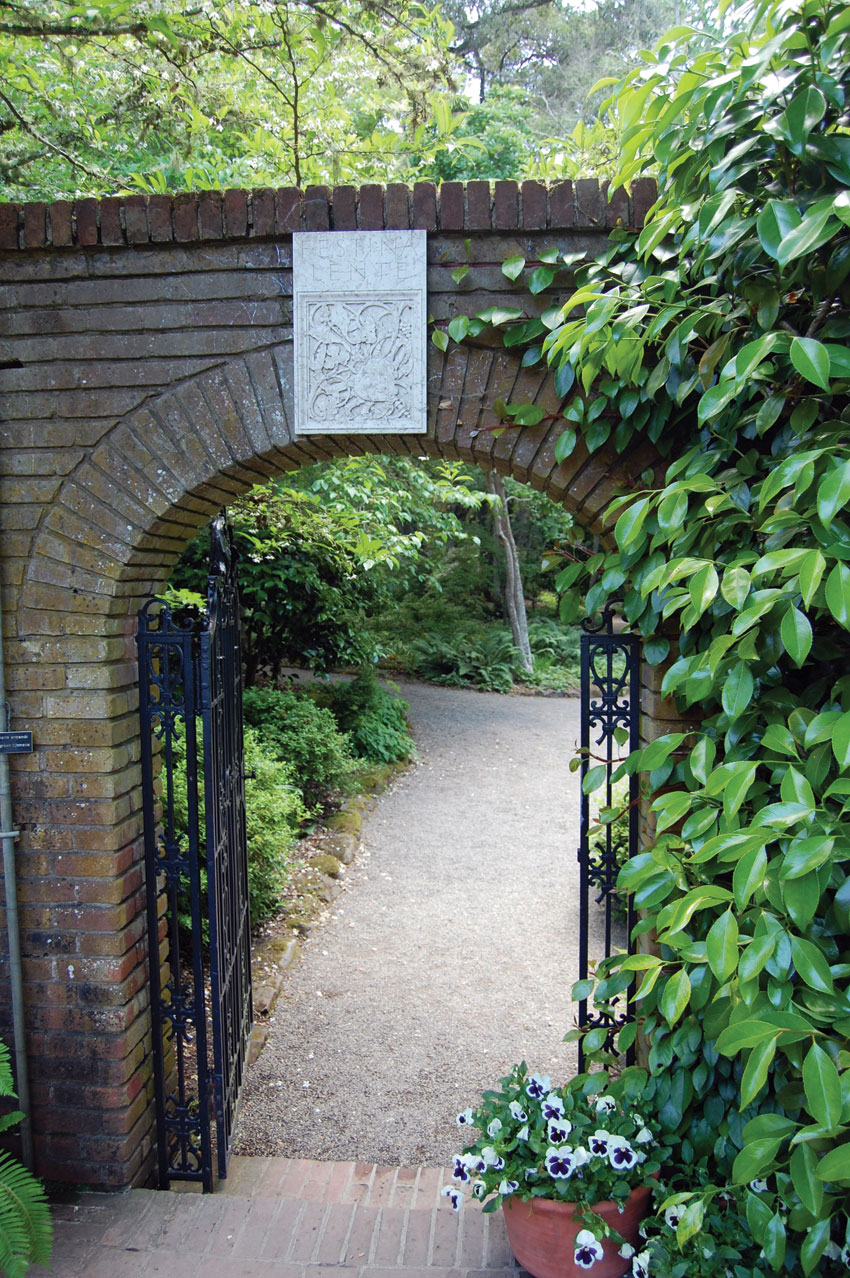
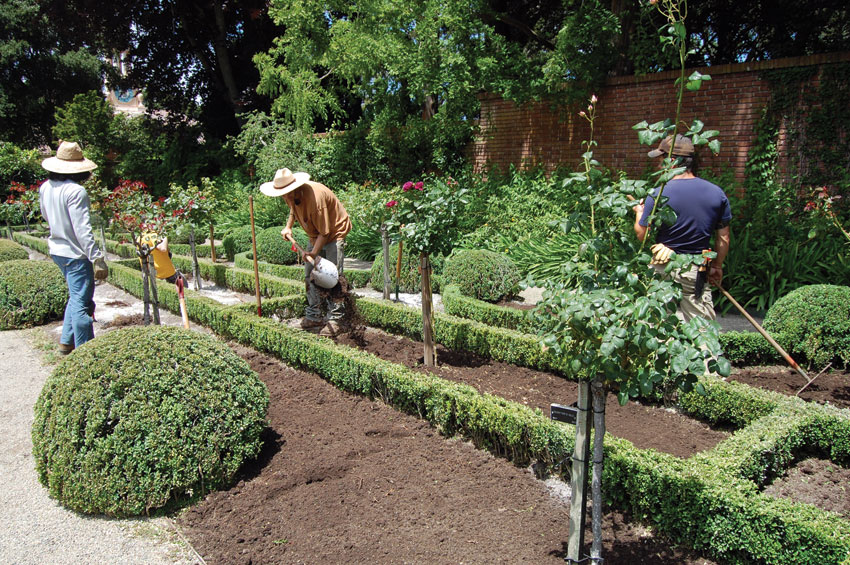
When you finally engage the strength to leave this rich palette of glorious life and history that continues to grow under the caring hands of volunteers and the full-time band of fifteen staffers, the memory will be palpable forever. Filoli Gardens was a dream fulfilled.
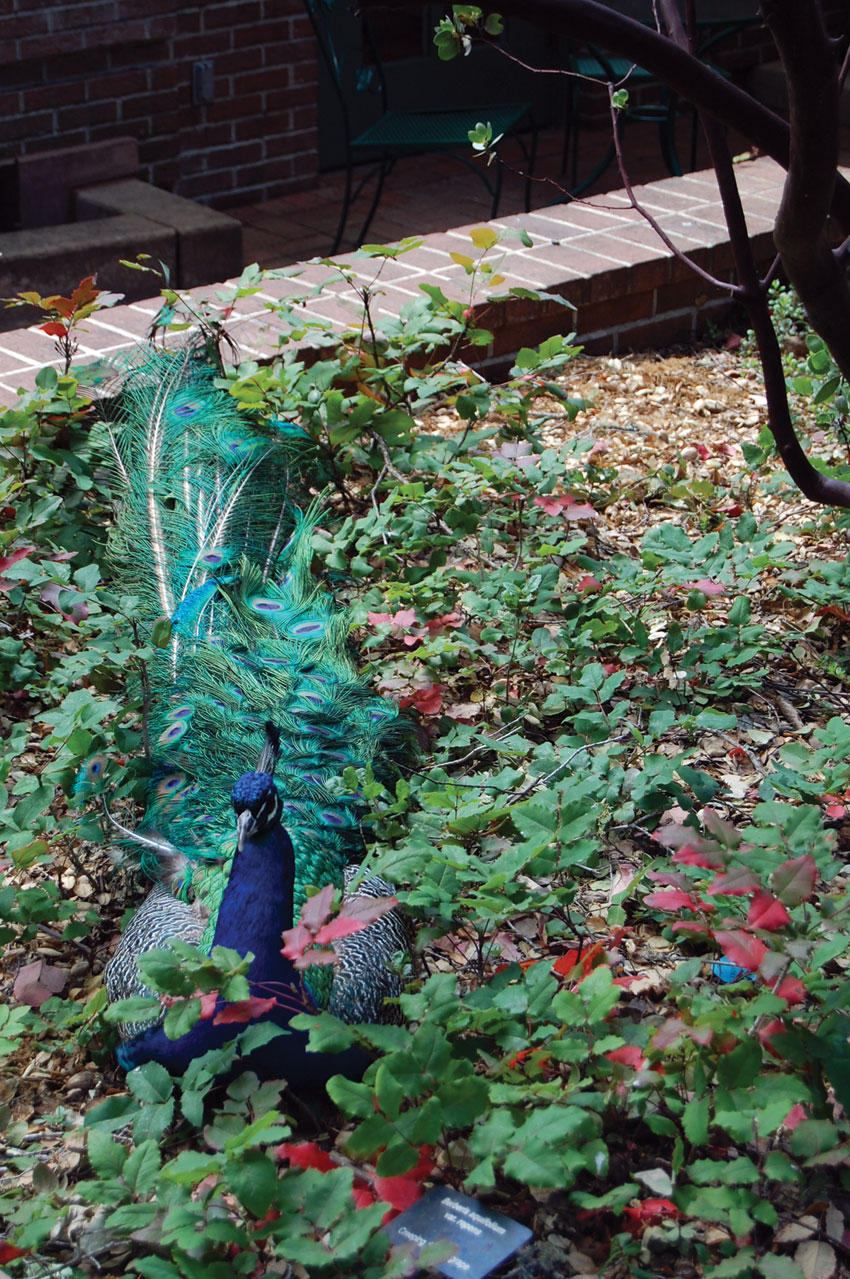
Going to Filoli
Location: 86 Cañada Road, Woodside, CA 94062. (Off 280, exit Edgewood Rd)
Visitor Hours: Tue-Sat 10 a.m.-3:30 p.m. (last admission 2:30 p.m.). Sun: 11 a.m.-3:30 p.m. (last admission 2:30 p.m.)
Admission: Adults, $20; seniors, $17; Students, $10, Children 4 years and younger, free. Educators with I.D., $10;
Website: www.filoli.org
email: visitorservices@filoli.org.
Phone: 650.650.364.8300-ext. 507.
